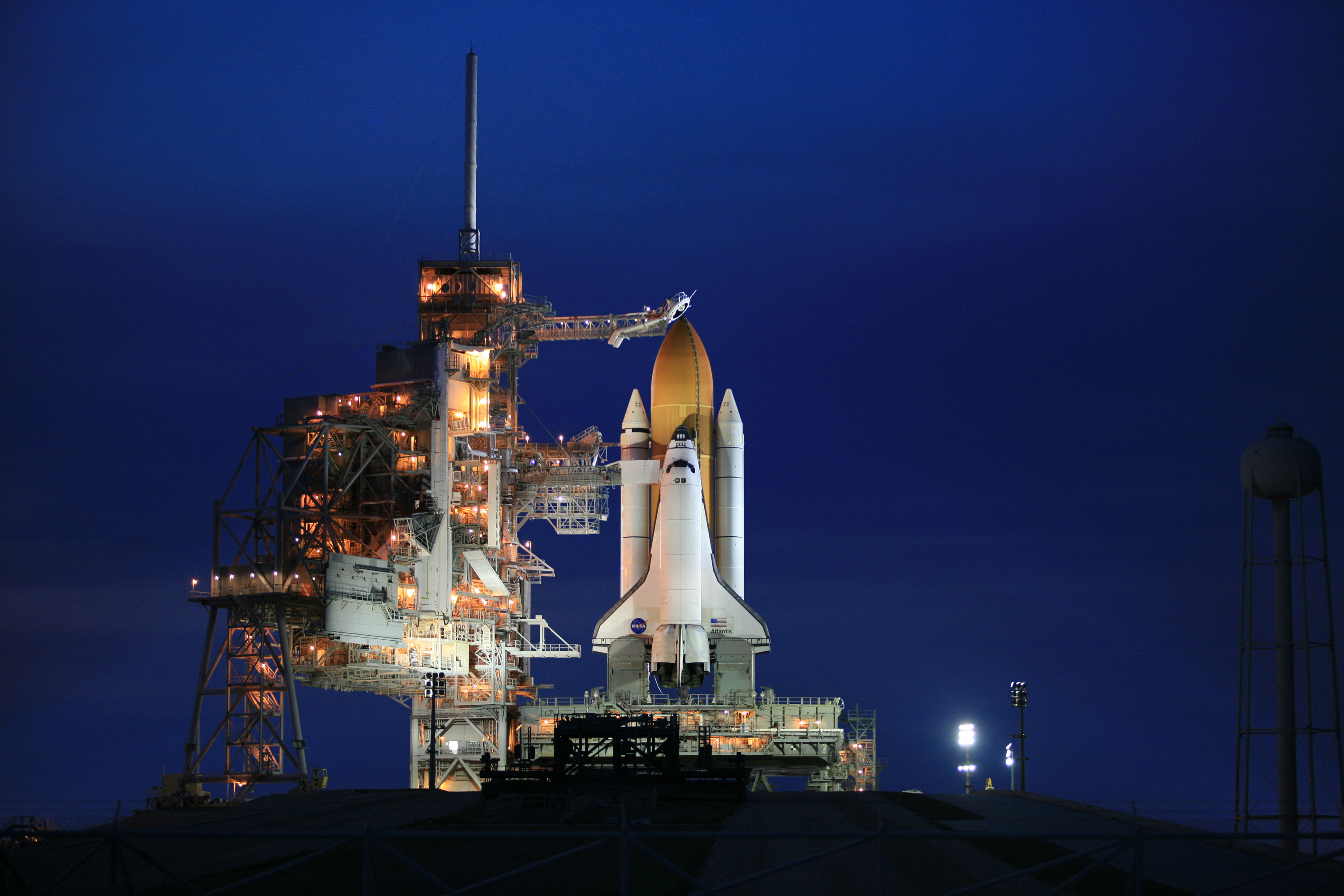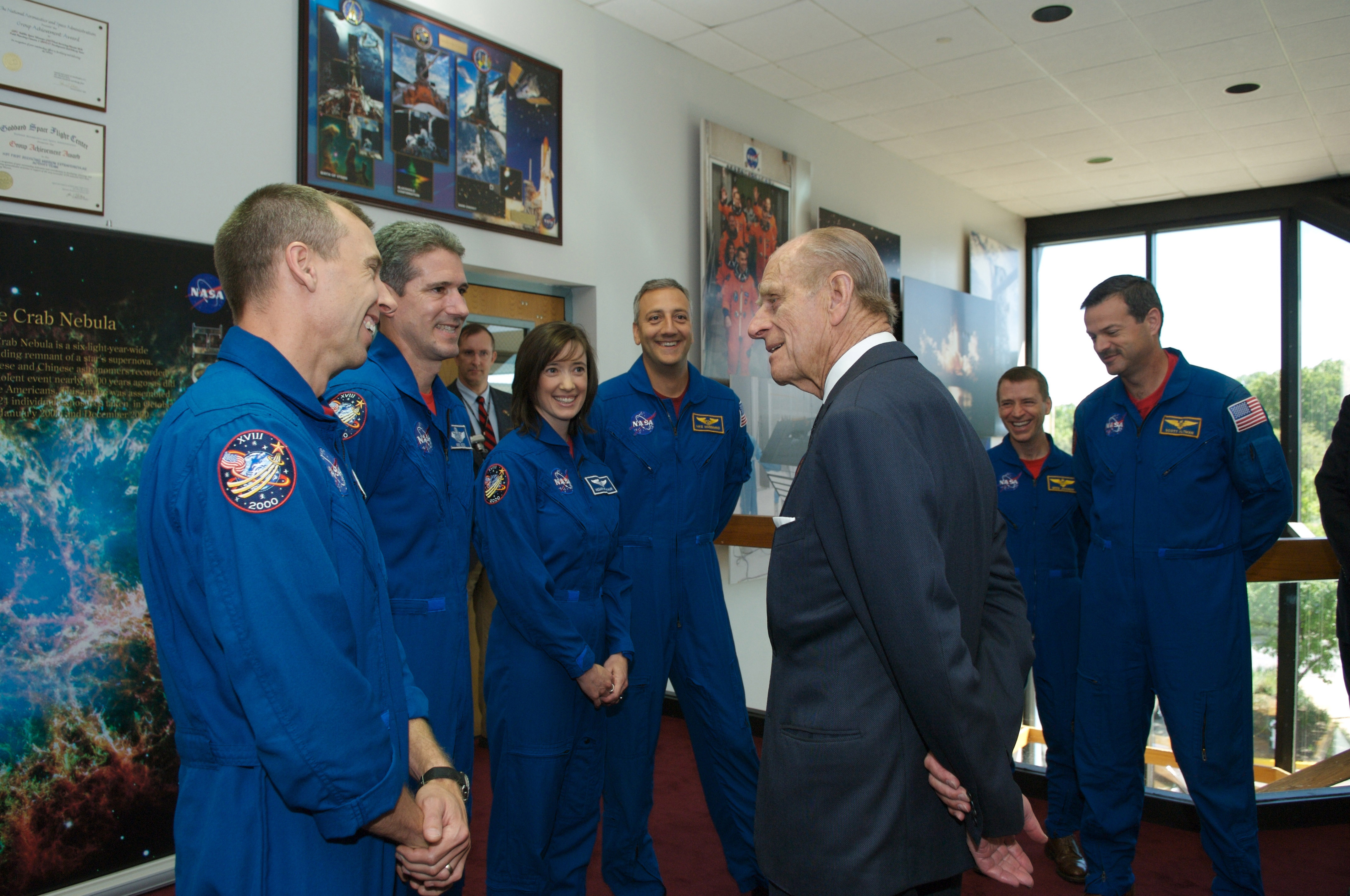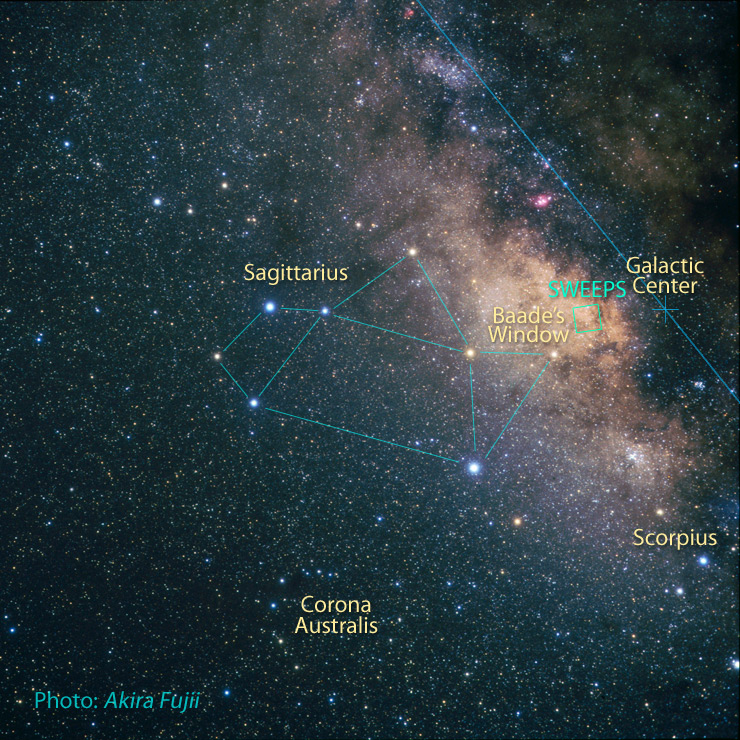 |
Advanced Camera For Surveys
The Advanced Camera for Surveys (ACS) is a third-generation axial instrument aboard the Hubble Space Telescope (HST). The initial design and scientific capabilities of ACS were defined by a team based at Johns Hopkins University. ACS was assembled and tested extensively at Ball Aerospace & Technologies Corp. and the Goddard Space Flight Center and underwent a final flight-ready verification at the Kennedy Space Center before integration in the cargo bay of the Columbia orbiter. It was launched on March 1, 2002, as part of Servicing Mission 3B (STS-109) and installed in HST on March 7, replacing the Faint Object Camera (FOC), the last original instrument. ACS cost US$86 million at that time. ACS is a highly versatile instrument that became the primary imaging instrument aboard HST. It offered several important advantages over other HST instruments: three independent, high-resolution channels covering the ultraviolet to the near-infrared regions of the spectrum, a large detector ar ... [...More Info...] [...Related Items...] OR: [Wikipedia] [Google] [Baidu] |
|
Advanced Camera For Surveys 2
The Advanced Party (), otherwise known as the Advanced Association () was a liberal and centrist Zionist political association in Mandatory Palestine founded by several urban liberal Zionists. The party was founded in order to represent the voice of Tel Aviv liberals and Zionists in the 1920 Assembly of Representatives election, election to the Yishuv's Assembly of Representatives in 1920. The party placed sixth in the election, coming in behind their rural General Zionist counterrpart, Hitahdut HaIkarim. The party represents first formal General Zionist political party to be founded, and as one of the earliest political ancestors of the modern-day Likud. History Under the British Mandate, the Yishuv (Jewish community), established a network of political and administrative institutions, among them the Assembly of Representatives.Itamar Rabinovich & Jehuda Reinharz (2008''Israel in the Middle East''Brandeis University Press, p84 To ensure that small groups were properly represente ... [...More Info...] [...Related Items...] OR: [Wikipedia] [Google] [Baidu] |
|
|
Grism
A grism (also called a grating prism) is a combination of a prism and grating arranged so that light at a chosen central wavelength passes straight through. The advantage of this arrangement is that one and the same camera can be used both for imaging (without the grism) and spectroscopy (with the grism) without having to be moved. Grisms are inserted into a camera beam that is already collimated. They then create a dispersed spectrum centered on the object's location in the camera's field of view. The resolution of a grism is proportional to the tangent of the wedge angle of the prism in much the same way as the resolutions of gratings are proportional to the angle between the input and the normal to the grating. The dispersed wavefront sensing system (as part the NIRCam instrument) on the James Webb Space Telescope uses grisms. The system allows coarse optical path length matching between the different mirror segments. See also * Diffraction grating * Echelle grating An e ... [...More Info...] [...Related Items...] OR: [Wikipedia] [Google] [Baidu] |
|
 |
STS-125
STS-125, or HST-SM4 (Hubble Space Telescope Servicing Mission 4), was the fifth and final Space Shuttle mission to the Hubble Space Telescope (HST). The launch of the Space Shuttle ''Atlantis'' occurred on May 11, 2009, at 2:01 pm EDT. Landing occurred on May 24 at 11:39 am EDT, with the mission lasting a total of just under 13 days. carried two new instruments to the Hubble Space Telescope, the Cosmic Origins Spectrograph and the Wide Field Camera 3. The mission also replaced a Fine Guidance Sensor (HST), Fine Guidance Sensor, six gyroscopes, and two battery (electricity), battery unit modules to allow the telescope to continue to function at least through 2014. The crew also installed new thermal blanket insulating panels to provide improved thermal protection, and a soft-capture mechanism that would aid in the safe de-orbiting of the telescope by a robotic spacecraft at the end of its operational lifespan. The mission also carried an IMAX camera with which the crew ... [...More Info...] [...Related Items...] OR: [Wikipedia] [Google] [Baidu] |
|
NASA
The National Aeronautics and Space Administration (NASA ) is an independent agencies of the United States government, independent agency of the federal government of the United States, US federal government responsible for the United States's civil list of government space agencies, space program, aeronautics research and outer space, space research. National Aeronautics and Space Act, Established in 1958, it succeeded the National Advisory Committee for Aeronautics (NACA) to give the American space development effort a distinct civilian orientation, emphasizing peaceful applications in space science. It has since led most of America's space exploration programs, including Project Mercury, Project Gemini, the 1968–1972 Apollo program missions, the Skylab space station, and the Space Shuttle. Currently, NASA supports the International Space Station (ISS) along with the Commercial Crew Program and oversees the development of the Orion (spacecraft), Orion spacecraft and the Sp ... [...More Info...] [...Related Items...] OR: [Wikipedia] [Google] [Baidu] |
|
|
STS-125 Crew Portrait
STS-1 (Space Transportation System-1) was the first orbital spaceflight of NASA's Space Shuttle program. The first orbiter, ''Columbia'', launched on April 12, 1981, and returned on April 14, 1981, 54.5 hours later, having orbited the Earth 37 times. ''Columbia'' carried a crew of two—commander John W. Young and pilot Robert L. Crippen. It was the first American crewed space flight since the Apollo–Soyuz Test Project (ASTP) in 1975. STS-1 was also the maiden test flight of a new American spacecraft to carry a crew, though it was preceded by atmospheric testing (ALT) of the orbiter and ground testing of the Space Shuttle system. The launch occurred on the 20th anniversary of Vostok 1, the first human spaceflight, performed by Yuri Gagarin for the USSR. This was a coincidence rather than a celebration of the anniversary; a technical problem had prevented STS-1 from launching two days earlier, as was planned. Crew Commander John Young and pilot Robert Crippen were sel ... [...More Info...] [...Related Items...] OR: [Wikipedia] [Google] [Baidu] |
|
 |
Space Telescope Imaging Spectrograph
The Space Telescope Imaging Spectrograph (STIS) is a spectrograph, also with a camera mode, installed on the Hubble Space Telescope. Aerospace engineer Bruce Woodgate of the Goddard Space Flight Center was the principal investigator and creator of the STIS. It operated continuously from 1997 until a power supply failure in August 2004. After repairs, it began operating again in 2009. The spectrograph has made many important observations, including the first spectrum of the Celestial body atmosphere, atmosphere of an extrasolar planet, HD 209458b. The STIS was installed on Hubble in 1997 during its second servicing mission (STS-82) by Mark C. Lee, Mark Lee and Steven Smith (astronaut), Steven Smith, replacing the High Resolution Spectrograph and the Faint Object Spectrograph. It was designed to operate for five years. On August 3, 2004, an electronic failure rendered STIS inoperable, ending its use 2 years beyond its predicted lifespan. In order to bring it back to operational ... [...More Info...] [...Related Items...] OR: [Wikipedia] [Google] [Baidu] |
|
William George Fastie
William George Fastie (6 December 1916 – 14 July 2000) was an American optical physicist and spectroscopist who played a part in the Johns Hopkins University space program of the late 1950s. Early years Fastie was born on December 6, 1916 in Baltimore, Maryland. He was one of four children of William Ferdinand and Carolyn Fastie. He attended Johns Hopkins University between 1934 and 1941, initially at evening classes and later as a graduate student in physics, supervised by August Herman Pfund, Robert W. Wood, and Gerhard Heinrich Dieke. Career During World War II, Fastie's work in the department of physics involved the development of infrared detectors. At the end of the War he joined Leeds & Northrup as a research physicist, but was lured back to Hopkins in 1951 by the professor of physics, John D. Strong. Fastie's first publication described a new design of spectrometer which today bears his name. With the launch of Sputnik 1, Fastie saw the potential of spectros ... [...More Info...] [...Related Items...] OR: [Wikipedia] [Google] [Baidu] |
|
 |
Mars Close Encounter (captured By The Hubble Space Telescope)
Mars is the fourth planet from the Sun. It is also known as the "Red Planet", because of its orange-red appearance. Mars is a desert-like rocky planet with a tenuous carbon dioxide () atmosphere. At the average surface level the atmospheric pressure is a few thousandths of Earth's, atmospheric temperature ranges from and cosmic radiation is high. Mars retains some water, in the ground as well as thinly in the atmosphere, forming cirrus clouds, frost, larger polar regions of permafrost and ice caps (with seasonal snow), but no liquid surface water. Its surface gravity is roughly a third of Earth's or double that of the Moon. It is half as wide as Earth or twice the Moon, with a diameter of , and has a surface area the size of all the dry land of Earth. Fine dust is prevalent across the surface and the atmosphere, being picked up and spread at the low Martian gravity even by the weak wind of the tenuous atmosphere. The terrain of Mars roughly follows a north-south divid ... [...More Info...] [...Related Items...] OR: [Wikipedia] [Google] [Baidu] |
 |
Sagittarius Window Eclipsing Extrasolar Planet Search
The Sagittarius Window Eclipsing Extrasolar Planet Search, or SWEEPS, was a 2006 astronomical survey project using the Hubble Space Telescope's Advanced Camera for Surveys#Wide Field Channel .28WFC.29, Advanced Camera for Surveys - Wide Field Channel to monitor 180,000 stars for seven days to detect extrasolar planets via the transit method. Area examined The stars that were monitored in this astronomical survey were all located in the Sagittarius-I Window. The Sagittarius Window is a rare view to the Milky Way's Galaxy bulge#Galactic bulge, central bulge stars: our view to most of the galaxy's central stars is generally blocked by Dark nebula, lanes of dust. These stars in the galaxy's central bulge region are approximately 27,000 light years from Earth. Planets discovered Sixteen candidate planets were discovered with orbital periods ranging from 0.6 to 4.2 days. Planets with orbital periods less than 1.2 days have not previously been detected, and have been dubbed "ultra-s ... [...More Info...] [...Related Items...] OR: [Wikipedia] [Google] [Baidu] |
|
Nanometer
330px, Different lengths as in respect to the Molecule">molecular scale. The nanometre (international spelling as used by the International Bureau of Weights and Measures; SI symbol: nm), or nanometer (American spelling Despite the various list of dialects of English, English dialects spoken from country to country and within different regions of the same country, there are only slight regional variations in English orthography, the two most notable variati ...), is a units of measurement, unit of length in the International System of Units (SI), equal to one billionth (short scale) or one thousand million (long scale) of a metre, meter (0.000000001 m) and to 1000 picometres. One nanometre can be expressed in scientific notation as 1 × 10−9 m and as m. History The nanometre was formerly known as the "''millimicrometre''" – or, more commonly, the "''millimicron''" for short – since it is of a micrometre, micrometer. It was often de ... [...More Info...] [...Related Items...] OR: [Wikipedia] [Google] [Baidu] |
|
|
Megapixel
In digital imaging, a pixel (abbreviated px), pel, or picture element is the smallest addressable element in a Raster graphics, raster image, or the smallest addressable element in a dot matrix display device. In most digital display devices, pixels are the smallest element that can be manipulated through software. Each pixel is a Sampling (signal processing), sample of an original image; more samples typically provide more accurate representations of the original. The Intensity (physics), intensity of each pixel is variable. In color imaging systems, a color is typically represented by three or four component intensities such as RGB color model, red, green, and blue, or CMYK color model, cyan, magenta, yellow, and black. In some contexts (such as descriptions of camera sensors), ''pixel'' refers to a single scalar element of a multi-component representation (called a ''photosite'' in the camera sensor context, although ''wikt:sensel, sensel'' is sometimes used), while in yet ... [...More Info...] [...Related Items...] OR: [Wikipedia] [Google] [Baidu] |
|
 |
Charge-coupled Device
A charge-coupled device (CCD) is an integrated circuit containing an array of linked, or coupled, capacitors. Under the control of an external circuit, each capacitor can transfer its electric charge to a neighboring capacitor. CCD sensors are a major technology used in digital imaging. Overview In a CCD image sensor, pixels are represented by Doping (semiconductor), p-doped metal–oxide–semiconductor (MOS) capacitors. These MOS capacitors, the basic building blocks of a CCD, are biased above the threshold for inversion when image acquisition begins, allowing the conversion of incoming photons into electron charges at the semiconductor-oxide interface; the CCD is then used to read out these charges. Although CCDs are not the only technology to allow for light detection, CCD image sensors are widely used in professional, medical, and scientific applications where high-quality image data are required. In applications with less exacting quality demands, such as consumer and pr ... [...More Info...] [...Related Items...] OR: [Wikipedia] [Google] [Baidu] |